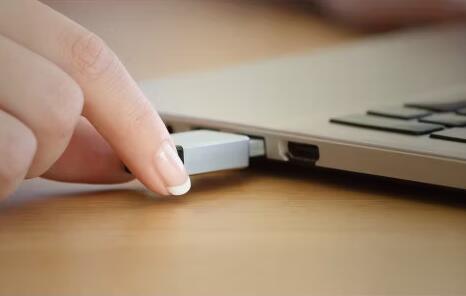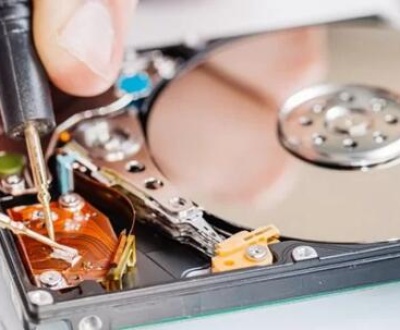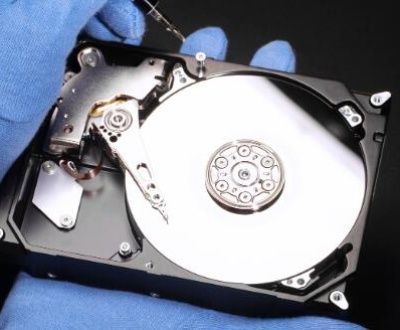Resetting a USB flash drive can be a useful process when you want to erase all the data, fix formatting issues, or recover it from problems such as corruption.
Why Reset a USB Flash Drive?
There are several reasons why you might want to reset a USB flash drive:
Erase Data Completely: Resetting can remove all stored data, making the drive ready for new use.
Fix Corruption Issues: Sometimes, USB drives can get corrupted due to improper removal, malware, or file system errors.
Change File Systems: If you need to switch between different file systems (e.g., FAT32 to NTFS), resetting the drive can be essential.
Increase Usable Space: Occasionally, a USB drive may show less available space than expected due to partitions or hidden data. A reset can recover this space.

Methods for Resetting a USB Flash Drive
1. Quick Format via Operating System (Windows)
A quick and easy method to reset a USB drive is through the built-in formatting tools in Windows.
Steps:
Insert the USB Drive into your computer.
Open File Explorer and locate the USB drive.
Right-click on the USB drive and select Format.
A window will pop up. Under File System, select the desired file system (NTFS, FAT32. exFAT).
Make sure the Quick Format option is checked if you want a fast reset. If you prefer a more thorough reset, uncheck this box.
Click Start to begin the format process.
Pros:
Fast and simple.
Requires no additional software.
Cons:
May not fix deeper corruption issues.
A quick format doesn’t completely erase the data; it’s still recoverable.
2. Full Format for More Thorough Reset
A full format is more comprehensive than a quick format. It checks for bad sectors on the drive and overwrites the data.
Steps:
Insert the USB Drive and locate it in File Explorer.
Right-click on the drive and select Format.
Choose the appropriate File System.
Uncheck the Quick Format option.
Click Start to begin the formatting process.
Pros:
Completely erases the drive, making data unrecoverable.
Scans for bad sectors and repairs them.
Cons:
Takes significantly longer than a quick format.
3. Using Disk Management in Windows
Disk Management is a powerful built-in utility in Windows that allows you to manage partitions and reset USB drives. This is useful when simple formatting doesn’t work, or the drive shows multiple partitions.
Steps:
Insert the USB Drive.
Press Win + X and select Disk Management from the menu.
Locate the USB drive in the list. It may show as multiple partitions if it’s corrupted.
Right-click on each partition and select Delete Volume until all partitions are removed.
Right-click on the unallocated space and select New Simple Volume.
Follow the prompts to format the drive, selecting the desired File System.
Pros:
Can fix issues related to multiple partitions.
Allows full control over partitioning.
Cons:
More complex than simple formatting.
4. Command Prompt Method (Diskpart)
Diskpart is a command-line tool in Windows that gives more advanced control over your drives. It can be used to fully reset a USB drive and fix more stubborn issues.
Steps:
Insert the USB Drive.
Press Win + R, type cmd, and press Enter to open the Command Prompt.
Type diskpart and press Enter.
Type list disk and press Enter to display all connected drives.
Identify your USB drive by its size and type select disk X, replacing X with the number of the USB drive.
Type clean and press Enter. This will remove all partitions and data from the drive.
Type create partition primary to create a new partition.
Type format fs=fat32 (or ntfs, exfat, etc.) to format the drive.
Type exit to leave Diskpart.
Pros:
Powerful tool that can fix severe issues.
Removes all partitions and completely resets the drive.
Cons:
Requires command-line usage, which may be intimidating for some users.
Incorrect commands can affect other drives, so caution is needed.
5. Resetting USB Flash Drive on Mac (Using Disk Utility)
For Mac users, resetting a USB flash drive can be done through Disk Utility, which is a built-in application on macOS.
Steps:
Insert the USB Drive into your Mac.
Open Disk Utility (you can find it in Applications > Utilities).
In the left-hand panel, locate your USB drive.
Select the drive, then click on the Erase button at the top of the window.
Choose a File System (exFAT for cross-platform compatibility, HFS+ for Mac only).
Click Erase to reset the drive.
Pros:
Simple and built-in tool.
Works for both Mac-only and cross-platform formats.
Cons:
Limited to macOS users.
6. Using Third-Party Tools
There are several third-party tools that offer more advanced USB flash drive reset options. These tools are useful if standard methods don’t work or you want more features.
Popular Tools:
Rufus – A popular tool for formatting and creating bootable USB drives.
HP USB Disk Storage Format Tool – A specialized tool that can fix corruption and format issues.
EaseUS Partition Master – Offers advanced partitioning features and can repair drives.
Steps for Using Rufus:
Download and install Rufus.
Insert your USB drive and open Rufus.
Select the USB drive from the drop-down menu.
Choose the File System (e.g., FAT32. NTFS).
Click Start to begin the reset.
Pros:
Offers more control over file systems and bootable drives.
Can fix some issues that standard formatting can’t.
Cons:
May require installation of additional software.
7. Low-Level Formatting
A low-level format writes zeroes to every sector of the USB drive, ensuring that all data is wiped and the drive is reset to a factory-like state. This process can help recover USB drives that have severe issues or have been corrupted by malware.
Tools for Low-Level Formatting:
HDD Low-Level Format Tool
Steps:
Download and install a Low-Level Format Tool.
Insert the USB drive.
Open the tool and select the USB drive.
Follow the instructions to perform a low-level format.
Pros:
Completely wipes the drive and fixes deep-seated corruption.
Can make a severely corrupted drive usable again.
Cons:
Time-consuming.
Once data is erased, it’s unrecoverable.
8. Fixing Bad Sectors and File System Errors (Check Disk Command)
If your USB drive is acting up due to bad sectors or file system errors, the chkdsk command can be used to diagnose and fix these issues.
Steps:
Insert the USB drive.
Open Command Prompt (Press Win + R, type cmd, and hit Enter).
Type chkdsk X: /f, replacing X with the letter of your USB drive.
Press Enter to begin the scan. The tool will automatically attempt to fix any errors.
Pros:
Can fix file system errors without erasing data.
Simple and effective.
Cons:
Not a full reset; only fixes certain issues.
9. Resetting USB Flash Drive on Linux (Using GParted)
For Linux users, GParted is a powerful graphical tool for managing partitions, including USB drives.
Steps:
Insert the USB Drive into your Linux computer.
Install GParted if it’s not already installed (sudo apt-get install gparted).
Open GParted and select your USB drive from the drop-down menu.
Right-click on any existing partitions and select Delete.
Right-click on the unallocated space and select New to create a new partition.
Select your desired File System (e.g., FAT32. NTFS) and apply the changes.
Pros:
Full control over partitions and file systems.
Works for Linux systems.
Cons:
A bit more complex than other methods.
Choosing the Right File System for Your USB Drive
When resetting your USB drive, you’ll need to choose the right file system for your needs:
FAT32: Compatible with most devices, but has a file size limit of 4 GB.
exFAT: No file size limit, and works across multiple platforms (Windows, macOS).
NTFS: Ideal for Windows users, but may not work well with non-Windows devices.
HFS+: Best for Mac users but not compatible with Windows.
Preventing Future USB Flash Drive Issues
After resetting your USB drive, follow these tips to prevent future issues:
Safely Eject the Drive: Always eject the USB drive properly before removing it from your computer.
Use Reliable Software: Avoid using unreliable or untrusted software with your USB drive.
Backup Important Data: Regularly back up important data from your USB drive to another location.
Avoid Untrusted Devices: Don’t insert your USB drive into untrusted computers to prevent malware infections.
Resetting a USB flash drive can resolve various issues, from corruption to file system problems. Whether you use built-in tools like Windows File Explorer, Disk Management, or advanced options like Diskpart and third-party tools, there are multiple ways to achieve a clean, functional USB drive. Always remember to back up important data before resetting and choose the appropriate file system based on your needs.
About us and this blog
Panda Assistant is built on the latest data recovery algorithms, ensuring that no file is too damaged, too lost, or too corrupted to be recovered.
Request a free quote
We believe that data recovery shouldn’t be a daunting task. That’s why we’ve designed Panda Assistant to be as easy to use as it is powerful. With a few clicks, you can initiate a scan, preview recoverable files, and restore your data all within a matter of minutes.
Subscribe to our newsletter!
More from our blog
See all postsRecent Posts
- Data recovery salt lake city utah 2025-04-18
- Data recovery sacramento 2025-04-18
- Data recovery miami 2025-04-18

 Try lt Free
Try lt Free Recovery success rate of up to
Recovery success rate of up to









